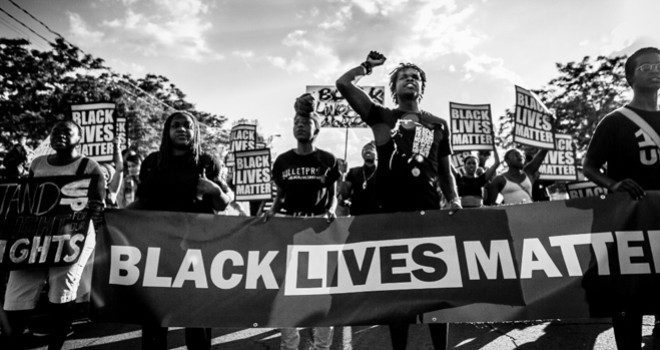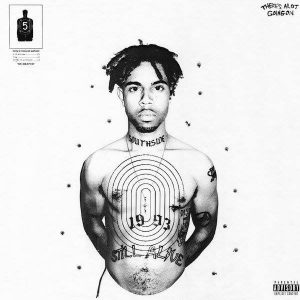
A hierarchy of death: why do black lives not matter in the media?
by Shahryar Iravani | December 4, 2016
The rapper M.I.A. has controversially criticised the media coverage of the Black Lives Matter movement, suggesting that in contrast with the attention received by police brutality against black people, consideration of violence against Muslim people is not only neglected, but is actively whitewashed. In an interview with the Evening Standard, M.I.A. argues, “It’s interesting that in America the problem you’re allowed to talk about is Black Lives Matter. Are Beyoncé or Kendrick Lamar going to say Muslim Lives Matter? Or Syrian Lives Matter? Or this kid in Pakistan matters? That’s a more interesting question.”
For M.I.A this is a question “you cannot ask [on] an American TV programme, [and] you cannot create that tag on Twitter.” Even if her comments betray a naïve, if not racist, assumption about the level of attention anti-black violence has garnered, M.I.A.’s statement touches upon a significant point: in popular discourse—more specifically on social media and in the news—the loss of Muslim lives is rarely meaningfully addressed.
It is more compelling to look at these events through the lens of solidarity and through the recognition of the parallels and patterns of violence which black and brown people suffer alike, rather than crude comparison. What M.I.A. may be hinting at is that racism is a global system, manifesting in varying incarnations in different transnational contexts: dead Palestinians don’t matter like dead African-Americans don’t matter, like dead Syrians don’t matter. The pattern exists in the way in which groups are dispossessed and face state violence in the name of another group’s supremacy and have their suffering subsequently ignored, allowing for the continuation of this pattern of oppression. It is in this self-fulfilling, reciprocal way that we are taught some lives are simply less valuable than others. When the news tells us black people don’t matter, when it doesn’t give any real coverage to police violence against the black community, and police violence isn’t confronted as the horrific and unchallenged phenomenon it is, it can and will continue to exist. This is the case at home, too, where the deaths of asylum seekers in the Yarl’s Wood Detention Centre, and black people in police custody in the UK such as Joy Gardner, Sarah Reed, and Sheku Bayoh, remain undocumented in the media, and therefore disregarded in discussions of racial injustice in the UK.
What we see in the parallel killings of unarmed black children and children in Iraq or Syria in the name of western notions of neoliberal democracy, and the parallel ignorance we feign to these killings, are the effects of an insidious trickle-down white supremacy to which even children are not immune. The Black Lives Matter movement is based on the simple recognition that all lives have equal, intrinsic, inalienable worth but that this worth is blunted when a white man with a gun can kill an innocent black child and not only get away with it, but will be able to watch as that black child is demonised and interrogated even after his death, as in the case of Trayvon Martin. The movement is a response to what is nothing short of state-sanctioned summary execution which mirrors and mimics the unforgivable horrors of apartheid, a militarised state exerting horrific force upon a racial minority whose own suffering we are taught to forgive and ignore.
Movements like Black Lives Matter arise from the need for assurance that if black people are murdered the killer will face justice, that the state cannot have free reign in picking who lives and dies, and choosing whose deaths are worth more extensive coverage, deeper mourning, and further-reaching repercussions. The systematic allocation of value to certain bodies over other devalued bodies because of ethnicity defines and epitomises racism. When it comes to media coverage and response, white people’s deaths are seen as tragic, brown and black people’s deaths as inevitable, even justified.
So what is it about black and brown blood which makes it so forgettable? When we ask why black lives matter less, we must remember it is entirely unsurprising that a state built upon the theft, exploitation, and dehumanisation of Africans might continue to indulge in the continued devaluation of black lives. What we see in Ferguson and Baltimore, black communities protesting the killings of Michael Brown and Freddie Gray, and the hundreds of men and women like them by American police, is a simple indicator America is still to wake from the nightmare of slavery. The chains haven’t disappeared but have become invisible.
The devaluing of black lives in favour of white lives is woven into the fabric of the American body politic. Physical, sexual, and psychological violence against the black individual and black communities is entirely necessary for the upholding of white dominance. Discussions about the devaluation of black lives rarely reflect on the collective trauma of the black psyche that continued physical and sexual exploitation since slavery has engendered, which is required for black people’s continued subordination, as evidenced by many studies of the correlation between racism, mental distress, and depression in non-white peoples in America.
The way we consume media representations of violence, often misleadingly distorted to demonise particular groups whilst brushing over their suffering, plays an untold role in the devaluation of certain lives. In the summer of 2014, when Israel executed its brutal Operation Protective Edge on Gaza, in which hundreds of innocent children were killed, multiple civilian deaths would be reported as a brief afterthought succeeding the reporting of one Israeli soldier’s death, as if Jewish and Arab lives do not have equal importance. The Guardian ran live coverage of the funerals and eulogies of Israeli civilians for nine hours on its website; the same consideration was not afforded to the numerous Palestinian victims of the operation. It is clear simply by the coverage of the rate of Israeli and Palestinian deaths within the conflict that in the dominant narrative, and despite the severe asymmetry of the conflict, Palestinian lives are clearly worth less. This phenomenon epitomises the kind of hierarchy of death in which we are taught certain lives have more worth. The clear message is that brown people are expendable.
In the news, the deaths of brown and black people in primitive, barbaric, exotic nations are reported as mere statistics, whilst the unnecessary and brutal violence enacted on black and brown bodies is reduced to dehumanising stock phrases like ‘collateral damage’ which render human lives to numbers without names or faces. Meanwhile we are exposed to pornographic displays of maimed, bloodied, and dead brown bodies on television sets which deprive the victims of terrorist atrocities of their humanity, and the dignity the media is sure to afford those murdered in western and white-majority countries. When white people are victims of terrorism, we are never shown their dead bodies in the news, whereas pictures of three-year-old Alan Kurdi’s dead body was beamed across televisions and printed in newspapers— what Brendan O’Neill described in the Spectator as “dead-child porn.” The same occurred with the recent footage of the traumatised face of Omran Daqneesh, the victim of an airstrike, horrifying images designed to elicit some sadness before being promptly forgotten. In this sense, the spectacle of disposable and disposed-of brown bodies only serves to reify the expendability of the brown body in the white popular imagination.
By virtue of their race and religion, Arabs and Muslims are determined to be unworthy of sympathy. Black and brown people consume media portrayals of the insignificance of their killings; they watch as other black and brown people are pathologised as thugs and savages, and are blamed for their own deaths. A black child who watches Trayvon Martin’s killing attributed to his own supposed thuggishness, and sees his killer defended and allowed freedom without punishment, is taught very quickly how much value his life is really thought to have.
The question of whose lives are worth saving, whose stories are worth telling, whose suffering will garner the most sympathy and attention, must be answered by interrogating the simple racism of selective caring. Post-caring politics mean we consume images of the dead without actually engaging with them; overexposure devalues importance, so ignorance is really part of the territory we now exist in. When confronted with the truth of our unfeeling and inhuman reactions to black and brown deaths, we argue our innocence with the self-pitying language of desensitisation, that too many of ‘them’ have died for us to comprehend the innate value of their lives, or more pathetically, that the deaths of black and brown people far away are just that, too far away to truly affect us.
These arguments are relentless in their cold, unforgiving lack of empathy. They hinge on a dichotomy of ‘us’ and ‘them’ which divides us into categories of worth and worthlessness. In actuality, we don’t care about the frequent and far away for no other reason but the callous racism which posits whiteness as inherently more deserving of mourning. The solution is to unlearn this unfeelingness, to see value in those who look and speak and pray differently than we do, because until then, we will remain locked in a cycle of violence, apathy, and indifference.




